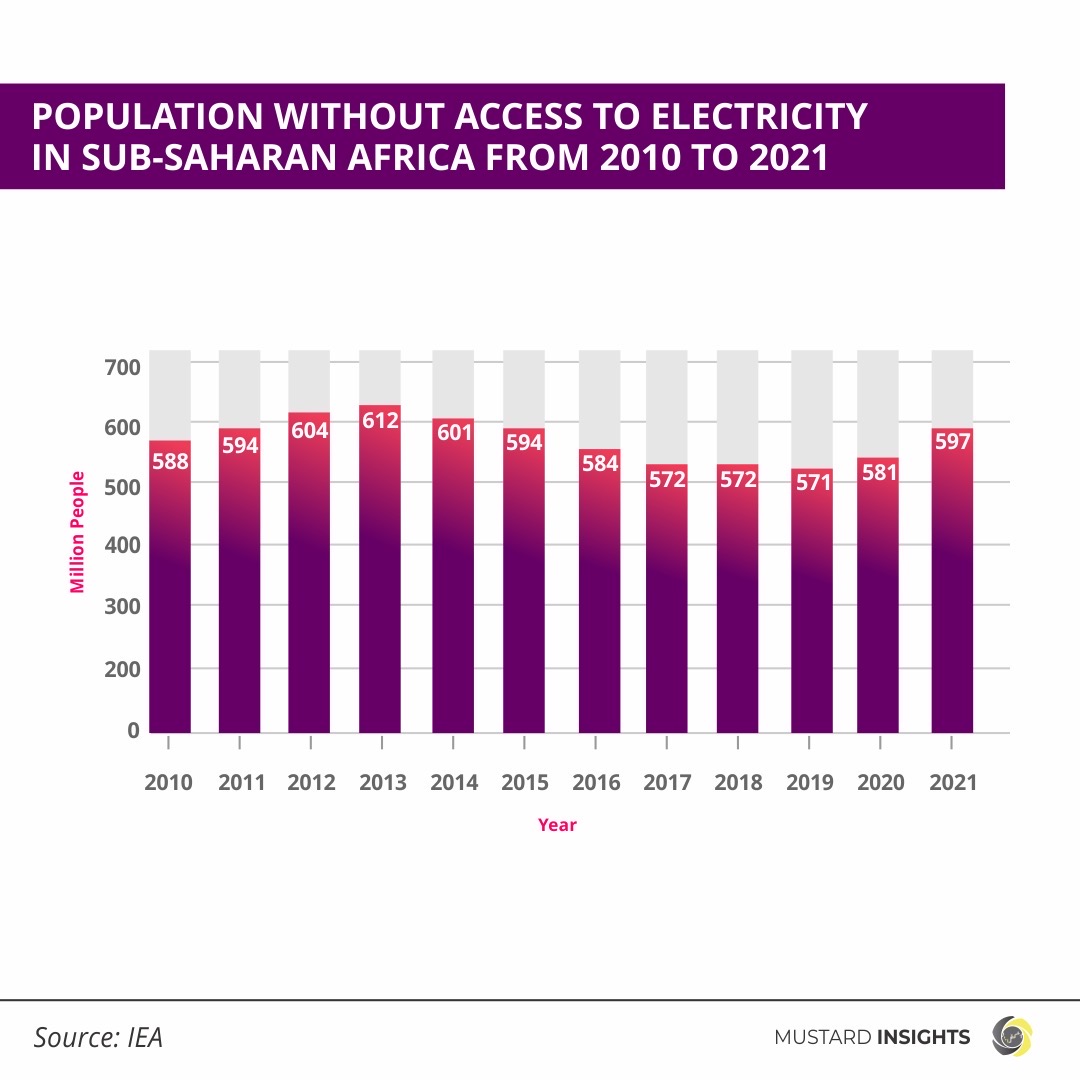The importance of electricity cannot be over-emphasized as it has become part of our daily lives, from powering domestic appliances like light bulbs, fans, television sets to powering large industrial machines and factories. Also, its availability for use can help in achieving the United Nations Sustainable Development Goal 13 aimed at reducing global carbon footprint.

The importance of electricity cannot be over-emphasized as it has become part of our daily lives, from powering domestic appliances like light bulbs, fans, television sets to powering large industrial machines and factories. Also, its availability for use can help in achieving the United Nations Sustainable Development Goal 13 aimed at reducing global carbon footprint.
In 2010, the population of Sub-Saharan Africa was 1.039 billion of which more than half the population size (588 million) had no access to electricity. By the following year, the population of Sub-Saharan Africa had grown by 2.61 percent to 1.066 billion inhabitants, 594 million of these people were without electricity.
By 2013, the population of Sub-Saharan Africa without access to electricity had increased to 612 million; the highest it has ever been since 2010. Between 2014 and 2019, more Africans had access to electricity as the population without access to electricity dropped to as low as 571 million (out of 1.308 billion). This decline proved temporary as erratic power supply would become prominent again pushing the population without access to electricity to 581 million and 597 million in 2020 and 2021 respectively.
These fluctuations show that the governments of nations in sub-Saharan Africa have not given much thought to providing stable electricity and making sure it reaches more people especially those in rural areas. Most times, employment, improved health care, agriculture and farming are given high priority than electricity. With the population of the continent increasing annually, it may get worse.
In addition, the lack of electricity will negatively affect the development and growth of African nations for capacity building. More than half of secondary schools in sub-Saharan Africa do not have power, many clinics and hospitals in the region do not have access to reliable electricity. The same can be mentioned for development projects such as community centres finding it difficult to achieve their goals of expanding technology to the rural areas.
The African continent has abundant solar, hydro, wind and bio-energy resources. Therefore, investment and reliance on renewable energy sources/technologies may be a great avenue to improve access to electricity not just in Sub Saharan Africa, but the entire Africa at large.
Thoughts?
We won't share your email address. All fields are required.
